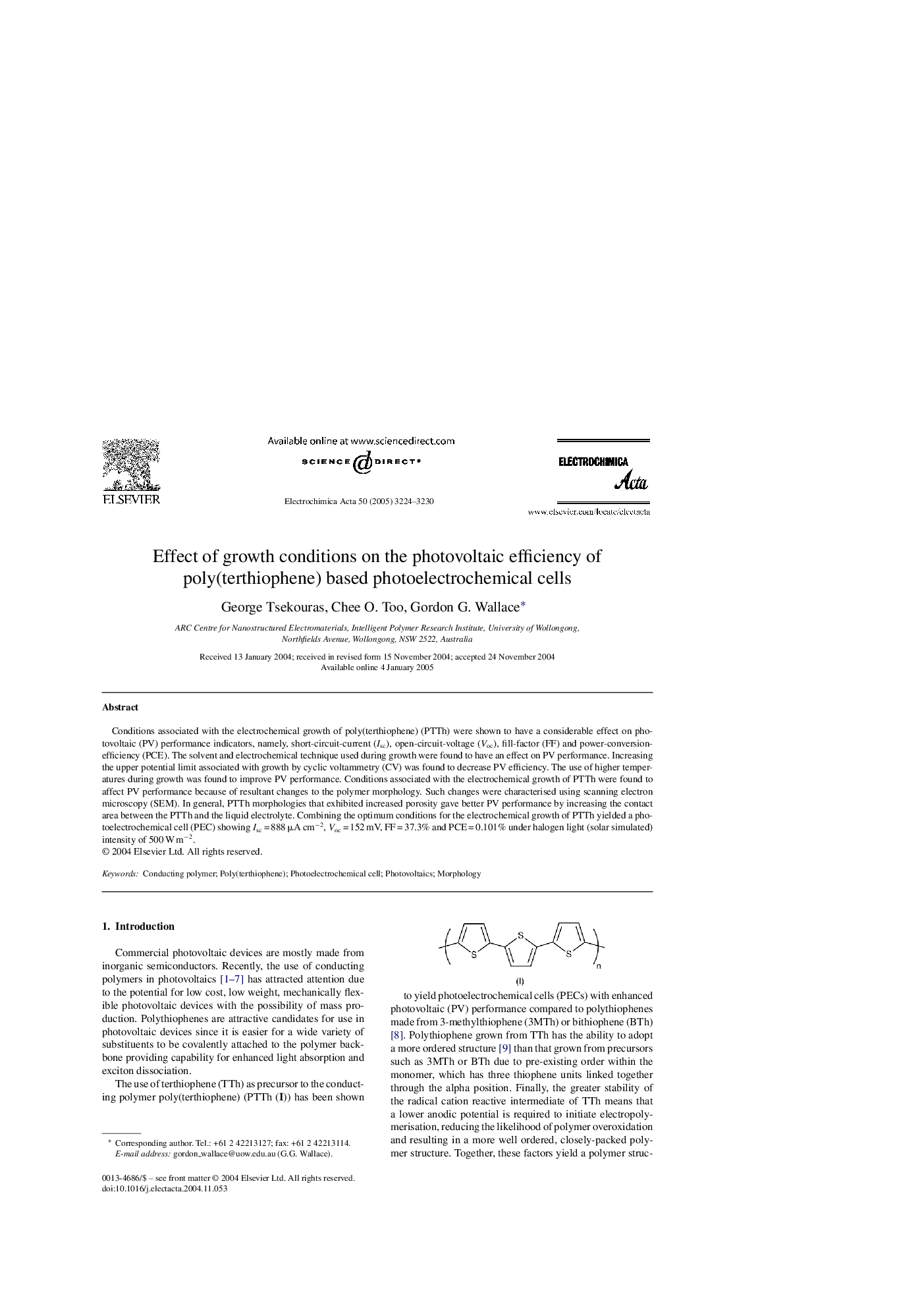| Article ID | Journal | Published Year | Pages | File Type |
|---|---|---|---|---|
| 196709 | Electrochimica Acta | 2005 | 7 Pages |
Conditions associated with the electrochemical growth of poly(terthiophene) (PTTh) were shown to have a considerable effect on photovoltaic (PV) performance indicators, namely, short-circuit-current (Isc), open-circuit-voltage (Voc), fill-factor (FF) and power-conversion-efficiency (PCE). The solvent and electrochemical technique used during growth were found to have an effect on PV performance. Increasing the upper potential limit associated with growth by cyclic voltammetry (CV) was found to decrease PV efficiency. The use of higher temperatures during growth was found to improve PV performance. Conditions associated with the electrochemical growth of PTTh were found to affect PV performance because of resultant changes to the polymer morphology. Such changes were characterised using scanning electron microscopy (SEM). In general, PTTh morphologies that exhibited increased porosity gave better PV performance by increasing the contact area between the PTTh and the liquid electrolyte. Combining the optimum conditions for the electrochemical growth of PTTh yielded a photoelectrochemical cell (PEC) showing Isc = 888 μA cm−2, Voc = 152 mV, FF = 37.3% and PCE = 0.101% under halogen light (solar simulated) intensity of 500 W m−2.
